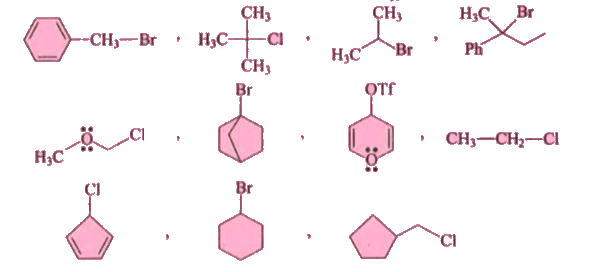In a conference 10 speakers are present. If S1 wants to speak before S2andS2 wants to speak after S3, then find the number of ways all the 10 speakers can give their speeches with the above restriction if the remaining seven speakers have no objection to speak at any number.
To solve the problem of arranging 10 speakers with the given restrictions, we can follow these steps:
Step 1: Understand the Restrictions
We have 10 speakers: S1, S2, S3, and 7 others. The restrictions are:
- S1 must speak before S2.
- S2 must speak after S3.
Step 2: Total Arrangements Without Restrictions
First, we calculate the total arrangements of 10 speakers without any restrictions. The number of ways to arrange 10 speakers is given by:
10!
Step 3: Apply the Restrictions
Next, we need to account for the restrictions. We can think of the arrangement of S1, S2, and S3 as a smaller problem.
Step 3.1: Arranging S1, S2, and S3
In any arrangement of the 10 speakers, S1, S2, and S3 can be arranged in any order. However, we need to satisfy the conditions:
- S1 must be before S2.
- S2 must be after S3.
To satisfy these conditions, we can consider the valid arrangements of S1, S2, and S3:
- The valid orderings that satisfy the conditions are: S1, S3, S2.
Step 3.2: Counting Valid Arrangements
For any arrangement of the 10 speakers, there are 3! (6) ways to arrange S1, S2, and S3. Out of these, only 1 arrangement (S1, S3, S2) satisfies our conditions. Therefore, the fraction of arrangements that satisfy the conditions is:
16
Step 4: Calculate the Total Valid Arrangements
Now, we can calculate the total number of valid arrangements of all 10 speakers by multiplying the total arrangements by the fraction that satisfies the restrictions:
Total Valid Arrangements=10!×16
Step 5: Final Calculation
Calculating 10!:
10!=3628800
Thus, the total number of valid arrangements is:
Total Valid Arrangements=36288006=604800
Final Answer
The total number of ways all 10 speakers can give their speeches with the given restrictions is:
604800
We have 10 speakers: S1, S2, S3, and 7 others. The restrictions are:
- S1 must speak before S2.
- S2 must speak after S3.
First, we calculate the total arrangements of 10 speakers without any restrictions. The number of ways to arrange 10 speakers is given by:
10!
Next, we need to account for the restrictions. We can think of the arrangement of S1, S2, and S3 as a smaller problem.
In any arrangement of the 10 speakers, S1, S2, and S3 can be arranged in any order. However, we need to satisfy the conditions:
- S1 must be before S2.
- S2 must be after S3.
- The valid orderings that satisfy the conditions are: S1, S3, S2.
For any arrangement of the 10 speakers, there are 3! (6) ways to arrange S1, S2, and S3. Out of these, only 1 arrangement (S1, S3, S2) satisfies our conditions. Therefore, the fraction of arrangements that satisfy the conditions is:
16
Now, we can calculate the total number of valid arrangements of all 10 speakers by multiplying the total arrangements by the fraction that satisfies the restrictions:
Total Valid Arrangements=10!×16
Calculating 10!:
10!=3628800
Thus, the total number of valid arrangements is:
Total Valid Arrangements=36288006=604800
The total number of ways all 10 speakers can give their speeches with the given restrictions is:
604800
Topper's Solved these Questions
Similar Questions
There are two bosy B1 and B2. B1 and n1 different toys and B2 and n2 different toys. Find the number of ways in which B1 and B2 can exchange their toys in such a way that after exchanging they still have same number of toys but not the same set.
View SolutionIdentify number of substrate those can give SN1 and SN2 reaction both.
 View Solution
View SolutionAvarage lifetime of a hydrogen atom excited to n=2 state 10−6s find the number of revolutions made by the electron on the avarage before it jump to the ground state
View SolutionAmong 10 persons, A, B, C are to speak at a function. The number of ways in which it can be done if A wants to speak before B and B wants to speak before C is a. 10!/24 b. 9!/6 c. 10!/6 d. none of these
View SolutionTwo identical speakers emit sound waves of frequency 680HZ uniformly in all directions with a total audio output of 1mW each. The speed of sound in air is 340m/s. A point P is a distance 2.00m from one speaker and 3.00m from the other.
(a) Finf the intensity I1 and I2 from rach speaker at point p separately.
(b) If the speakers are driven coherently and in phase, what is the intensity at point p?
(c ) If they driven coherently but of phase by 180∘, what is the intensity at point P?
(d) If the speakers are incoherent, what is the intensity at point p?View SolutionIn a shooting competition a man can score 5, 4, 3, 2, 1 or 0 points for each shot. Then the number of different ways in which he can score 10 in seven shots is
View SolutionStatement 1: Number of ways in which Indian team (11 players) can bat, if Yuvraj wants to bat before Dhoni and Pathan wants to bat after Dhoni is 11!/3!. Statement 2: Yuvraj, Dhoni, and Pathan can be arranged in batting order in 3! ways.
View SolutionA radioactive sample S1 having an activity of 5μCi has twice the number of nuclei as another sample S2 which has an activity of 10μCi. The half-lives of S1 and S2 can be
View SolutionSixteen players S1, S2, S3,…,S16 play in a tournament. Number of ways in which they can be grouped into eight pairs so that S1 and S2 are in different groups, is equal to
View SolutionFind the number of ways in which 10 condidates A1,A2,......,A10 can be ranked so that A1 is always above A2,
View Solution

